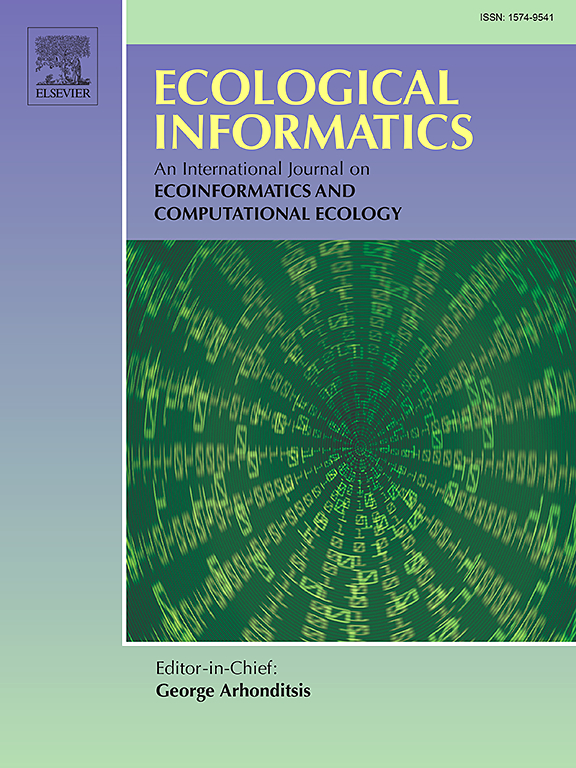Prediction of fish (Coilia nasus) catch using spatiotemporal environmental variables and random forest model in a highly turbid macrotidal estuary
IF 5.8
2区 环境科学与生态学
Q1 ECOLOGY
引用次数: 0
Abstract
Fish populations in estuaries are declining due to the changes in environmental conditions and fishing pressures. The estuarine fish behaviour is highly variable, influenced by both upstream fluvial and downstream tidal conditions. This study aims to predict the catch per unit effort (CPUE) of the Japanese Grenadier Anchovy (Coilia nasus) in the Chikugo River estuary by analyzing an extensive dataset of hourly fish catches and environmental variables through Random Forest (RF) models. The fish catch data for C. nasus, collected at 14.6–16 km upstream from the river mouth during the spawning season of every year from 2009 to 2020 using traditional fishing methods, was used. Along with these catch records, hydro-environmental variables such as salinity, turbidity, and temperature were monitored during the same period. The longitudinal variation of these environmental variables along the estuary (0–16 km) was measured during a fortnightly tidal cycle in September 2010. A total of 32 models (M1-M32) were developed to identify the optimal set of environmental variables influencing CPUE. The analysis highlights the significant impact of variables such as salinity, suspended sediment concentration (SSC), temperature, river discharge, and mean tidal range on CPUE. The results revealed that model M19, which incorporated salinity, SSC, and discharge, achieved the highest predictive accuracy (R2 = 0.89) and closely matched actual field conditions. Further, the results agree with previous research, as spatial distribution plots showed a preference for mature C. nasus habitats 15–16 km upstream from the river mouth. Additionally, the study found that temperature had a negligible effect on short-term CPUE predictions, likely due to its pronounced seasonal variability, suggesting that temperature may not be a critical factor for short-term CPUE predictions. This study highlights the significance of utilizing environmental variables to predict CPUE, emphasizing their role in understanding fish catch dynamics across spatiotemporal variations. The findings provide valuable insights for fisheries management, particularly in optimizing fishing zones based on environmental conditions to improve catch efficiency.
求助全文
约1分钟内获得全文
求助全文
来源期刊

Ecological Informatics
环境科学-生态学
CiteScore
8.30
自引率
11.80%
发文量
346
审稿时长
46 days
期刊介绍:
The journal Ecological Informatics is devoted to the publication of high quality, peer-reviewed articles on all aspects of computational ecology, data science and biogeography. The scope of the journal takes into account the data-intensive nature of ecology, the growing capacity of information technology to access, harness and leverage complex data as well as the critical need for informing sustainable management in view of global environmental and climate change.
The nature of the journal is interdisciplinary at the crossover between ecology and informatics. It focuses on novel concepts and techniques for image- and genome-based monitoring and interpretation, sensor- and multimedia-based data acquisition, internet-based data archiving and sharing, data assimilation, modelling and prediction of ecological data.
 求助内容:
求助内容: 应助结果提醒方式:
应助结果提醒方式:


